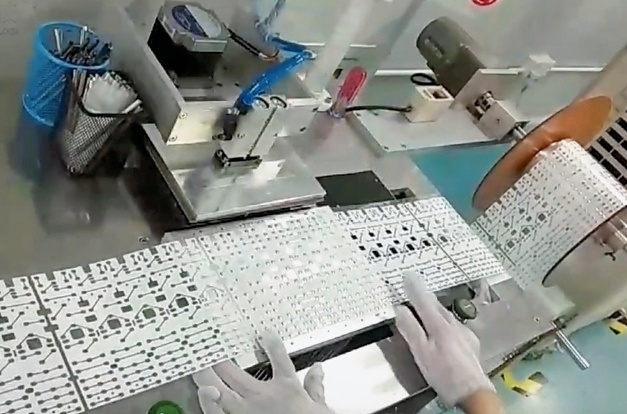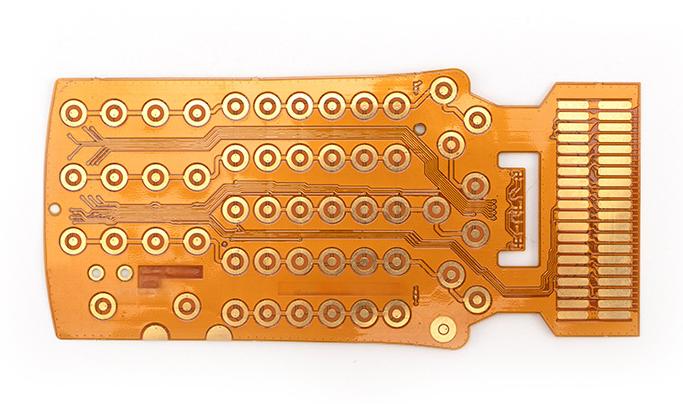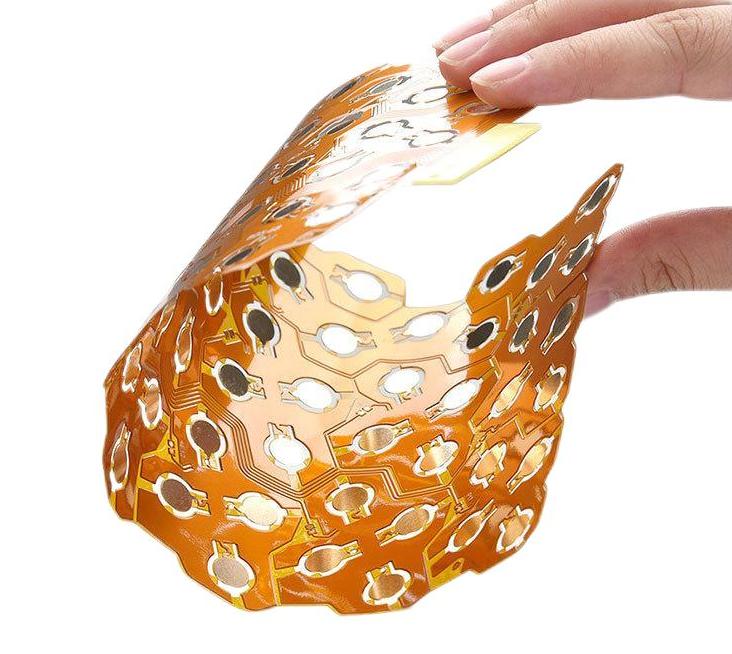Search
Key Considerations for Integrating FPC and Metal Dome (Dome Switch) in Design and Production
- Feb 19,2025
-
Share
The integration of Flexible Printed Circuit (FPC) and Metal Dome (also known as Dome Switch) represents a pivotal technological solution in the electronics manufacturing landscape. This combination is prevalently employed in a wide array of electronic devices, especially those demanding a compact footprint, high - reliability tactile feedback, and a flexible interconnect solution. The synergy between FPCs, with their characteristic pliability and multi - layer circuitry capabilities, and metal domes, renowned for their precise tactile actuation, significantly elevates the functionality and user experience of electronic products. However, the successful realization of this integration hinges on meticulous attention to numerous key details throughout the design and production phases.

1. Design - related Details
1.1 Mechanical Design
Dome Placement and Pitch: Precise determination of the metal dome's position on the FPC is paramount and must be aligned with the product's button matrix layout. The dome pitch, which refers to the center - to - center distance between adjacent domes, should be optimized to prevent cross - talk and ensure distinct key actuation. For instance, in the design of a mobile phone keypad, maintaining an appropriate dome pitch is crucial for accurate input and tactile feedback.
FPC Thickness and Stiffening Strategies: The thickness of the FPC is a critical parameter that influences both the flexibility and mechanical integrity of the combined structure. A sub - optimal FPC thickness can lead to issues such as mechanical instability during dome actuation or reduced flexibility. To mitigate these problems, designers often incorporate stiffeners, such as FR - 4 or polyimide - based rigidizers, in the FPC regions where domes are attached. This strategic addition enhances force transfer efficiency and safeguards against excessive FPC deformation.
1.2 Electrical Design
Contact Resistance Minimization: Minimizing the contact resistance between the metal dome and the FPC's conductive traces is a fundamental requirement for reliable electrical connectivity. The surface finish of the FPC's copper traces, often achieved through processes like electroless nickel immersion gold (ENIG) or organic solderability preservative (OSP), and the material composition of the metal dome, typically stainless steel or nickel - based alloys, play pivotal roles. High - quality surface finishes can effectively reduce contact resistance, ensuring stable electrical signals during dome actuation.
Electrical Isolation and Trace Clearance: Robust electrical isolation between different circuit paths on the FPC is essential, particularly in the vicinity of metal domes. This isolation is achieved by maintaining an adequate trace clearance, which is the distance between adjacent conductive traces. Designers must adhere to strict design rules regarding trace clearance to prevent short - circuits and ensure the seamless operation of the overall electrical system.

2. Production - related Details
2.1 Manufacturing Process
Assembly Precision and Automated Assembly: Achieving high - precision assembly of the metal dome onto the FPC is a cornerstone of the production process. Automated pick - and - place machines, equipped with advanced vision - guided systems, are commonly employed in mass production to ensure accurate dome placement. These machines can achieve micron - level accuracy, far surpassing the precision achievable through manual assembly methods.
Adhesion and Bonding Optimization: The adhesion between the metal dome and the FPC is a critical factor in determining the long - term reliability of the product. Selecting the appropriate adhesive, such as acrylic - based or epoxy - based adhesives, is contingent upon the material properties of the FPC and the metal dome. Rigorous control of the adhesive curing process, including parameters such as temperature, time, and pressure, is essential to ensure strong and durable bonding.
2.2 Quality Control
Visual Inspection and AOI Technology: Comprehensive visual inspection is an integral part of the quality control process. Trained operators often conduct manual visual inspections using magnifying tools to detect visible defects such as misaligned domes, damaged FPC traces, or adhesive irregularities. In addition, automated optical inspection (AOI) systems, equipped with high - resolution cameras and advanced image processing algorithms, can rapidly and accurately identify a wide range of defects, enhancing the efficiency and accuracy of quality control.
Performance Testing and Reliability Assurance: Post - assembly, the combined FPC - metal dome modules undergo a battery of performance tests, including tactile force testing, contact resistance monitoring, and life - cycle testing. Tactile force testing ensures that the dome actuation force falls within the specified range, providing consistent tactile feedback to the user. Contact resistance monitoring verifies the stability of electrical connectivity over time, while life - cycle testing simulates repeated dome actuation to assess the product's long - term reliability.

Shenzhen Huaruixin Electronics Co., Ltd. stands as a paragon of professionalism in the design and production of FPC - metal dome integrated solutions. Our team of seasoned engineers and technicians possesses in - depth knowledge of the intricate design details and production processes elaborated above. Leveraging state - of - the - art manufacturing equipment and stringent quality control protocols, we are committed to delivering high - quality products that meet and exceed industry standards.
We wholeheartedly welcome new and existing partners to engage in open - ended communication and collaborative discussions. By sharing insights, experiences, and technological advancements, we aim to foster a vibrant community of learning and innovation in the electronics manufacturing domain. Let us embark on this journey of continuous improvement together, driving the evolution of FPC - metal dome integration technology to new heights.

Let’s talk! We’ll provide the perfect solution for you!
-
 Huaruixin Electronics mainly produces printed circuit boards as the core business, to provide customers with one-stop solutions for FPC/PCB production, components sourcing and Assembly.
Huaruixin Electronics mainly produces printed circuit boards as the core business, to provide customers with one-stop solutions for FPC/PCB production, components sourcing and Assembly. - WHAT WE DO — PCB Design Solutions — Flex PCB Production — Components Sourcing — FPC&PCB Assembly
- PRODUCTS — Single Sided Flexible Circuits — Double Sided Flexible Circuits — Multilayer Flexible Cirucits — Rigid-Flex Circuits — FPC Assembly — PCB Assembly
- CAPABILITY — FPC Capability — Rigid-Flex Capability — PCB Capability — Assembly Capability
- Copyright © 2024 Shenzhen Huaruixin Electronics Co., Ltd. All Rights Reserved.
- Design By BONTOP


